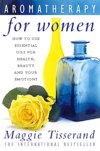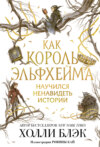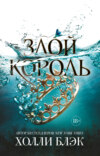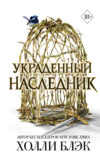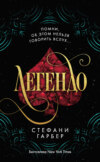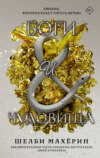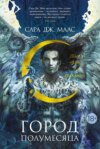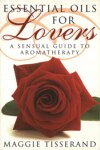Kitabı oxu: «Aromatherapy for Women: How to use essential oils for health, beauty and your emotions»
AROMATHERAPY FOR WOMEN

How to use the remarkable
beautifying and healing qualities
of essential oils
Maggie Tisserand

COPYRIGHT
Thorsons
An imprint of HarperCollinsPublishers
1 London Bridge Street
London SE1 9GF
Published by Thorsons 1985, 1990, 1993
© Maggie Tisserand 1993
Maggie Tisserand asserts the moral right to be identified as the author of this work
A catalogue record for this book is available from the British Library
All rights reserved under International and Pan-American Copyright Conventions. By payment of the required fees, you have been granted the nonexclusive, nontransferable right to access and read the text of this e-book on-screen. No part of this text may be reproduced, transmitted, downloaded, decompiled, reverse-engineered, or stored in or introduced into any information storage and retrieval system, in any form or by any means, whether electronic or mechanical, now known or hereafter invented, without the express written permission of HarperCollins e-books.
Source ISBN: 9780722522608
Ebook Edition © November 2017 ISBN: 9780008286477
Version: 2017-11-16
HarperCollinsPublishers has made every reasonable effort to ensure that any picture content and written content in this ebook has been included or removed in accordance with the contractual and technological constraints in operation at the time of publication.
CONTENTS
COVER
TITLE PAGE
COPYRIGHT
ACKNOWLEDGEMENTS
INTRODUCTION
Chapter One GETTING THROUGH THE DAY
Chapter Two GYNAECOLOGICAL REMEDIES
Chapter Three SEXUALITY AND SENSUALITY
Chapter Four MASSAGE
Chapter Five HEALTH AND HEALING
Chapter Six AROMATHERAPY AND THE IMMUNE SYSTEM
Chapter Seven SKIN AND HAIR CARE
Chapter Eight PREGNANCY AND CHILDBIRTH
Chapter Nine AFTER THE BIRTH
Chapter Ten REMEDIES FOR CHILDREN’S ILLNESSES
Chapter Eleven BLENDING
Chapter Twelve RECIPES
GLOSSARY OF METHODS OF TREATMENT
SOME USEFUL CONVERSIONS
BOTANICAL NAMES OF ESSENCES
BIBLIOGRAPHY
INDEX
ABOUT THE PUBLISHER
ACKNOWLEDGEMENTS
Thanks to my friend Sue Robinson, who helped to edit many of the chapters.
Grateful thanks to my three children for being so trusting in me, and for the opportunities given to me to treat them, even for serious illnesses, and to put my faith to the test.
INTRODUCTION
Firstly, I would like to explain my reasons for the title of my book, and apologize to all those men who have said to me ‘What about aromatherapy for men?’ Of course, aromatherapy is not only for women: it is for any human being – woman, child or man – and also for animals, in certain circumstances. I chose the title as there is a large proportion of the book relating to pregnancy, childbirth and gynaecological problems, which are only pertinent to women, but there is much information contained in the book which will be of benefit to men, especially the section about ‘Aromatherapy and the immune system’ (Chapter 6).
For much of the book I have drawn largely on my own experiences during pregnancy, childbirth and in bringing up three children; in the visible improvements in my appearance and the general state of my health; and also on feedback from friends and relatives who have benefited from using essential oils.
In a nutshell, aromatherapy means ‘a therapy using aromas’. The aromas come from the plant kingdom – flowers, trees, bushes, and herbs. The relevant part of the plant (the wood of the sandalwood tree; the petals of the rose; the peel of the lemon; the leaves of rosemary bushes; berries of the juniper tree, etc) is put through a process of distillation, where the volatile, odiferous substance is captured. It is this liquid which is known as an essential oil.
Essential oils have many uses, although our sense of smell, being linked to our emotions, plays the largest part in recognizing the power of aromatherapy and it is here that we can discover how certain essences have the power to lift depression, or which essences have a calming influence on troubled emotions. Aromatherapy is a mixture of aromas, massage and medicine.
It was in 1972 that I first looked for an alternative form of medicine, when I decided that I no longer wanted to take aspirins or antibiotics. Homoeopathy was the alternative science that I chose to study, but whilst living in a sort of ‘medical commune’ with other like-minded young people, something happened which was to imprint itself forever in my memory – the miraculous healing power of essential oils! One day a friend turned up on the doorstep, nursing a badly burned arm. He had removed the radiator cap from his Jeep, and a jet of steam had seared the skin from his forearm. He resolutely refused to go to hospital, insisting that we treat him. Annie (an SRN nurse and trainee acupuncturist) diagnosed the injury as being a second-degree burn, and tidied up the site of injury with sterile instruments. I administered homoeopathic arnica to lessen the shock, and Robert Tisserand applied neat lavender oil on sterile gauze. The essence stung at first, but then reduced the pain, and this treatment was employed twice a day for a little over a week. After two weeks the arm was completely healed, there was no scar tissue, and our friend was able to return to work.
Lavender oil had been chosen because it had been used by Gattefosse in the 1930s and later by Dr Valnet – both in the treatment of burns, and both with remarkable results. Witnessing for myself the incredible healing power of essential oils in this way was the start of a long love affair with aromatherapy.
During my 11-year marriage to Robert Tisserand, now a leading aromatherapist, I literally ‘lived and breathed’ aromatherapy, utilizing essential oils for health, beauty and well-being, and although I am now divorced from Robert, my love for aromatherapy and my appreciation and respect for essential oils just gets stronger.
The subject of aromatherapy is so complex, yet at the same time so very simple to put into practice, that anyone can embark on the journey of aromatherapy, beginning with an aromatic bath and then, if so inclined, to go on studying aromatherapy for the rest of his or her life. There is always more to learn.
Having confidence is important when treating your family’s minor ailments using essential oils. I have confidence to treat my children because of my knowledge of the essences, my intuition, and my trust in the loving power that put the essences into the plants. When we are sick we have to put our trust in someone or something, and that someone can be a doctor, a pharmacist, or yourself, and that something can be a doctor’s prescription, an over-the-counter drug, or aromatherapy. The choice is yours.
Throughout this book, I have expressed opinions which may offend some medical personnel. I am not ‘anti-doctor’; in fact, several of my friends are doctors, but I strongly oppose the over-use of prescribed drugs. Modern medicine has much to offer, especially with regard to technological life-saving techniques, and if I were ever run over by a bus, I would certainly be thankful for this facility. However, I see nothing to be proud of in the way that our hospitals are used as an outlet for the drug companies’ products, costing the National Health Service millions of pounds per year, when cheaper, more effective, and more user-friendly remedies are available. A few hospitals in the UK are now incorporating aromatherapy into their patient care, with quite astounding results (in one Oxford hospital ward the administration of night-time sedatives has been significantly reduced as patients are offered an aromatherapy massage instead, and some wards are using essential oils on burners to purify the atmosphere); however, the use of essential oils in hospitals is still only employed on a very small scale. A recent report outlines the dangers of picking up infections whilst in hospital, and according to this report, the longer your stay in hospital, the more likely you are to acquire an infection which could prolong your hospital stay. This reinforces my observations and comments about maternity hospitals being dangerous places for babies and for the newly-delivered mother, and emphasizes the need to take our ‘healthy atmosphere’ with us. By surrounding ourselves with the protective aromas of plants, we can prevent the likelihood of succumbing to airborne bacteria. Aromatherapy is not just to treat an illness which has developed, but is a very real protection from environmental pollutants, bacteria and viruses. Instead of waiting for the body to manifest the pathological changes of disease, we have the tools available to protect the body and to build up resistance to disease, so that ill-health does not occur. We are at the beginning of a health revolution. Preventive medicine is the medicine of the future, and aromatherapy is one of the important therapies of the 1990s.
By keeping ourselves healthy and functioning efficiently, we automatically pay fewer visits to our doctor, thereby freeing him or her from the humdrum and repetitive prescribing of nonessential medicines, and allowing his or her skills to be channelled to the very sick and dying patient.
The reason for taking a trivial complaint to a doctor can no longer be excused in terms of ‘well it’s free – I have already paid for the NHS in my taxes’. Now that each prescription charge is several pounds in value, it is possible to purchase a bottle of essential oil for almost the same price. As nearly all essential oils have excellent ‘keeping qualities’, every time we buy an essential oil, unlike the ‘course’ of prescribed drugs which must be finished or thrown away, we are investing in long-term health by building up a collection of potent plant medicines. Furthermore, by utilising plant oils for our health needs, our bodies are no longer excreting antibiotics and other harmful drugs into the sea, via the sewage system. Aromatherapy is a truly holistic therapy, not only for humans but also for the planet.
Aromatherapy is very important to me, and my knowledge of aromatherapy has been the best investment, in terms of health and beauty, that I have ever made. I hope that by sharing my experiences with you, opinionated as they may seem, you will find in aromatherapy a valuable adjunct to other forms of alternative medicine and a very practical, highly enjoyable way of feeling and looking good.
Chapter One
GETTING THROUGH THE DAY
DEPRESSION
A big black cloud, blotting out the light from the sun, is how I describe depression when it happens to me. But as depression is something that affects most of us at one time or another, the way in which it manifests itself will vary from one person to another. One friend of mine describes it as like ‘wandering through thick fog, not knowing in which direction I am walking, and not knowing when or if the fog will lift’.
Another friend describes depression as being like an invisible, suffocating weight which she has to carry, and which makes her so exhausted that she feels tired all of the time. She told me that when recently depressed, and lying on her bed in the middle of the day thinking about her dire financial problems and wallowing in self-pity, a thought came into her head ‘like a distress flare at sea’, to turn to aromatherapy for help. Knowing that certain essences are beneficial in lifting depression she got up off the bed, sorted through her oil collection, and put three drops of clary sage onto her fragrancer, closed the door and window and again lay down on her bed, thinking that although she was beyond help, she ought to give it a try. This is how she described the following half hour:
‘It was incredible. Within minutes I was feeling lighter. I began to feel happier and less worried. The money problem was still there, but somehow I felt detached from it, as though it had been put into a balloon, which was floating above my head even though it was still attached to me by a string. The stifling weight which had robbed me of my energy and inner harmony was not there any more, and after 30 minutes I felt like getting up and getting on with things.
She experienced more energy than she had had for several days, and began to function normally again. Contrast this with the stories of women who have become addicted to tranquillizers, having been prescribed them for depression.
Some people find clary sage to be euphoric, and will not use the essence in their working environment for fear of becoming too light-headed. I like to use clary sage in my office occasionally, possibly because I don’t really like paper work, and doing it makes me feel moody. I have a theory about clary sage. Imagine that our emotions are like an elevator or lift, and that our normal state is the ground floor; when depressed we travel down to the lower ground floor, and when euphoric, we are on the first floor. Imagine that clary sage has the ability to take us up one floor level. If we are depressed, it returns us to the ground floor, but if we are already normal then it takes us to the first floor. This would explain why different people have different experiences with this essence. But the common denominator is that clary sage is emotionally uplifting.
JET-LAG
My three children arrived back from a two-week stay in Michigan absolutely exhausted. It was their first transatlantic flight since they were babies, so they were not at all ‘seasoned travellers’. On arriving home at 10 in the morning after an 11-hour journey, they each had a bowl of cereal and went to bed. I wasn’t sure whether to wake them up later in the day, or let them continue to sleep in the vain hope that they might sleep for 24 hours. Unfortunately they only managed 14 hours, which meant that by midnight they were wide awake and remained so until 6.30 the following morning. I did not want the strange sleeping pattern to continue for too long, so I woke them up at midday. To say that they were tired would be an understatement, so each had a bath with rosemary and geranium oils, after which their vitality seemed to be increased.
Over the next few hours they all seemed to be in a depressive, lethargic state, and so I decided to conduct an experiment. I sent one child off to bed for an hour’s nap, as a ‘control’. One daughter had dilute rose oil rubbed onto her neck, hands and wrist. My third child (who had been the most grumpy) was given some oils to smell. I put drops of jasmine, lemon and bergamot oils onto a tissue and wafted this under his nose. Of course he protested, saying that it was horrible, but the reaction was remarkable. Within two minutes he smiled and said ‘I feel better already.’ Every so often he would shiver slightly, as if he were very cold, and described these sensations as being like ripples going through his muscles. It seemed to me that his body was letting go of the stress and tension encountered by most air travellers. His sleep patterns returned to normal much faster than that of his sisters, who needed a nightly massage to get them off to sleep.
I have my own way of coping with jet-lag; I don’t allow myself to have it. When flying back from the west coast of America, I try to get a flight which arrives mid-morning UK-time. This means that I can drive home and be in bed by about 1 p.m., having set my alarm for 6 p.m. Sometimes it seems hard, but at 6 p.m. I force myself out of bed, and into a rosemary and geranium bath. Then I go to the supermarket to re-stock my groceries, followed by a light meal in a restaurant. Ten o’clock is when I allow myself to go to bed, and just to make sure that I have a deep sleep, I unplug the phones and put some marjoram oil onto a tissue or on the ceramic burner. Next morning, at about 9 a.m., I get up, have another rosemary and lemongrass bath, and tell myself that it’s just a normal day. Then I just go ahead and have a normal day (although I can’t handle anything which requires mental dexterity). As long as I continue the morning rosemary baths, and make sure I am in bed by 10 p.m. then I find that my body rhythms very quickly become readjusted, and I can truthfully say that I do not suffer from jet-lag.
TRAVEL SICKNESS
When my children were younger travel sickness was something I tried hard to guard against, because vomit is one aroma which I am not partial to! My eldest daughter would often complain of feeling sick while travelling on motorways. If she had been eating I would give her peppermint oil to smell, as peppermint is renowned for its stomachic properties (calming the stomach). Nervous tension is also a cause of travel sickness, and in this case the aroma of lavender would be more beneficial, as it is soothing and calming. The easiest way to use these essences without fear of spillage is to put one drop of either peppermint or lavender onto a tissue, and breathe in the vapours. Only on one occasion have I needed to clean up the back seat of my car, and then it was my fault for allowing my daughter to eat a huge cream-cake in a motorway service station. If a child (or adult for that matter) is prone to feeling car sick, the choice of foods taken before and during travel should be given careful consideration.
Lavender and peppermint oil on a tissue is the easiest way of breathing in the soothing vapours. A tissue impregnated with these oils can be placed inside a small plastic bag (sandwich-bag-sized) and popped into the glove compartment. When needed, just tear open a small hole in the bag and inhale.
TRAVELLER’S FATIGUE
Adults often have difficulty in sleeping during a long journey, even though they may be completely exhausted, but at least adults can rationalize that they have a sleep problem, and either read a book, watch the scenery or start up a conversation with a fellow passenger. Not so for a young baby or small child. Rational thinking is beyond them, and so their frustration and anger will manifest itself in crying and screaming. Once, whilst travelling by air to San Francisco, I experienced the desperate frustration of a child who could not get to sleep. The little girl was just over one year old, and very cute. For the first four hours she crawled around and played quite happily, until she was too tired to play any more; then the grizzling started. This turned to progressively louder cries until the mother administered a dose of Fenergen (a proprietary sedative for babies). The Fenergen did not send the child to sleep, but merely induced a sort of a ‘high’ which lasted for an hour. Then the screaming started. If you have ever been on a plane with a screaming child you know how it feels. You can’t go out for a walk. There is nowhere to go to escape the noise, and sleep is impossible. I’m rather shy, but when I could not bear to see and hear the distress any longer, I offered to hold the child for a while to give the mother a break. Prior to doing this, I rubbed some lavender oil down the sides of my neck. Walking up and down the galley with a beautiful baby girl in my arms reminded me of the time when my own children were babies, and how incredible babies are. Less than five minutes had gone by before the child was fast asleep and, much to the surprise of the parents, I was able to lay her down in the carrycot, where she slept peacefully until awoken by an air stewardess on our approach to San Francisco airport.
MENTAL FATIGUE
Several oils are mentally stimulating, but I have not found one which surpasses basil oil. A drop or two of basil on a source of heat such as a bowl of hot water, or specially designed fragrancer is, for me, as good as going for a walk along the sea front. Not only do I feel mentally alert, but refreshed also. I would recommend that office workers keep a bottle of basil in their desk for use mid-afternoon, when 5 o’clock seems so far away; or when the job demands that you work overtime, but your brain doesn’t quite feel able to cope.
I have often thought – on reading newspaper reports about overworked hospital doctors struggling to keep awake – that if only they could have a whiff of basil oil, it would perk up their brain cells just as coffee does, but without causing any strain on the kidneys.
Pulsuz fraqment bitdi.
